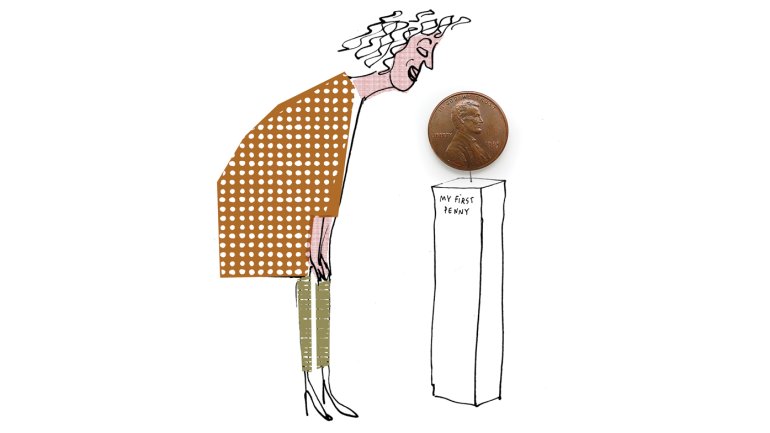Fine Art of Finance
Fine Art of Finance
Frugality has been a constant in Angelica Pozo’s life. “I’ve always been conscientious about my spending,” says the 65-year-old Cleveland clay artist. “My parents both went through the Depression, so they raised me with respect for how hard it is to make a buck.”
With the uncertain and variable income of an artist, these lifelong lessons have come in handy. Pozo’s financial savvy, along with some big commissions and rental income, have enabled her to survive and even thrive as a working artist. Recently, she paid off the mortgage on her home and studio. Here, she offers fellow artists advice for managing their finances.
Cultivate more than one side hustle.
Pozo, a published author, creates public art, teaches public and private workshops, curates exhibitions, and draws income from two rental units on her property. “I would definitely recommend having multiple income streams,” she says. “Things tend to dry up at times, and when that happens, you can jump on something else. Also, the more activities you’re involved in, the more potential opportunities you can access.” Case in point: Although Pozo no longer receives royalties for her out-of-print ceramics craft books, that work still contributes to her bottom line. “I’ve had people approach me for private workshops who found me through my books,” she says. “Lots of new work has come to me because of my past experiences, and it’s come from lots of different directions.”
Create work for a range of price points.
If you want to pay the bills by selling your artwork, it’s helpful to make sure all your fans can buy something from you, regardless of their spending power. “Big-ticket pieces are important because we often put our heart and soul into them, and they’re good at attracting potential buyers,” Pozo says. “But you can’t just make the most expensive thing and nothing else because people will eye that big, beautiful thing and not be able to buy it, but they’ll buy a smaller piece.” Sometimes, she says, people remember the high-end piece and return when they can afford it. “I’ve had buyers contact me years after seeing a large piece of mine and say, ‘Hey, is that piece still available? I’ve been saving up, and I have the money now.’”
Plus, smaller pieces can be a great source of income on their own. “I decided to participate in a local holiday arts and crafts sale, so I went to several dollar stores beforehand and bought all the white-glazed pottery I could find,” she recalls. Then she used the pottery pieces as canvases for quick, original paintings. “I didn’t have to labor through making [the pottery] like [I do] with my own ceramics, and I sold them directly to customers at $20 each.” Pozo’s eye for efficiency paid off: “I made more money from those inexpensive pieces than I’d ever made at a holiday sale before.”
Get help when you need it.
“When I was first starting out, I had someone prepare my taxes,” Pozo says. “When things started to get tight due to the economic downturn, I’d learned enough from having my taxes prepared to do them myself. I now use H&R Block online, which only costs around a hundred bucks a year.” That said, Pozo recommends that financial beginners check in with a professional at least once. “If nothing else, you should have someone explain what you can write off, what you should keep track of, and so on,” she says. And be selective. “Ask other artists to recommend people who are familiar with the arts and understand how artists make their money,” she says.
Don’t be afraid to talk about money (within reason).
While sharing private banking details or your debit card PIN is an obvious no-no, discussing your finances in general terms can net big rewards. “Back when I was trying to get a mortgage for my property, I happened to be doing a community residency at a church,” Pozo says. “One of the board members overheard me telling my colleagues about my struggles with the banks. It turned out that she worked with up-and-coming minority entrepreneurs. She recommended a couple banks with better records for giving loans to women and minority business owners and gave me contact information for specific people who might be able to help me. One of the banks she recommended approved me for a loan.” The lesson Pozo took away? Be open about your circumstances and willing to accept feedback. “You never know who might be in a position to give you advice.”
Invest some time in self-care.
Whatever techniques you use to manage your money, make sure to take care of yourself, too. “I’m a very energetic, can-do person, but I still get burnt out and anxious sometimes,” Pozo says. “I do either yoga or meditation when I get really stressed.” Pozo also finds downtime in – you guessed it – yet another income stream: working at her local farmers market. “I work there in the summer for a few hours each week,” she says. “I started back when my finances were really tight and I needed the extra money. It’s also a great way to get out of the studio now and then.” An income-generating activity that also reduces stress may be a rarity, but there might be something you enjoy outside your art that has the potential to become a side hustle as well.

